Posts tagged with Note-Grid
Here you can find a listing of all posts with the tag Note-Grid on my page.
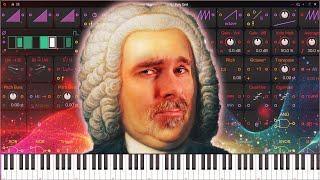
Jan 09, 2025 Tutorial
In this video, I demonstrate how to create an unusual chord progression tool using Bitwig Studio, experimenting with note stacking, transposing, and modulation to generate interesting harmonic structures. By leveraging Bitwig's note grid and modulation features, I show how to keep the chords within a chosen scale, like D# minor, while allowing for dynamic changes in chord shapes and progressions. Finally, I provide the preset for download so viewers can explore and customize their own chord progressions.
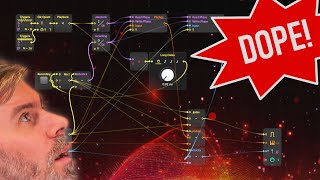
Jan 03, 2025 Tutorial
In this video, I demonstrate how to create a step recorder within Bitwig Studio using the Note Grid by replicating the functionality of a hardware step sequencer. The process involves using arrays to store pitch information for each step, counters to manage step progression, and some additional logic for recording and playback. I've saved the step recorder as a preset, which you can download and customize further, allowing you to build sequences on the fly more fluidly.
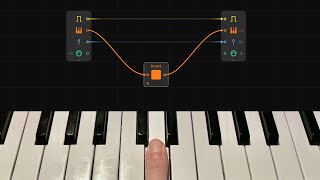
Jan 02, 2025 Tutorial
In this video, I demonstrate advanced techniques for creating chord progressions and melodies in Bitwig Studio using the note grid, focusing on inversion, multiplication, and probability-based note selection. By employing modules like transposers, amplifiers, and sample-hold functions, I explore unique musical possibilities that go beyond traditional scale and harmony theories. If you have questions or want more tips, don't hesitate to reach out, and I look forward to sharing more creative ideas in future videos.
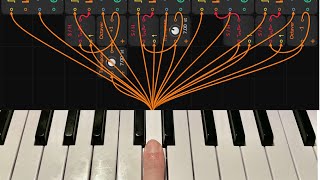
Dec 31, 2024 Tutorial
In this video, I demonstrate a technique for creating melodies and chord progressions using a note grid and virtual instruments, allowing for the layering of sounds with minimal input by playing single notes and adding static pedal tones. This approach enables improvisation with one note to generate complex harmonic textures, which can later be refined or altered. The method is versatile, suitable for various music styles, and emphasizes creativity and experimentation to inspire new musical ideas.
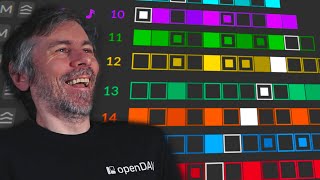
Nov 28, 2024 Tutorial
In this video, I dive into Bitwig Studio's new Stepwise step sequencer, exploring its integration with drum machines and how it can be customized using Bitwig's modular system. I demonstrate various techniques to enhance its basic features, such as adding probability, velocity, and groove using modulators and note effects. Through experimentation and creativity, I show how Stepwise, though basic, can be a powerful tool for creating unique musical patterns.
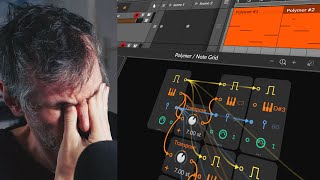
Sep 18, 2024 Tutorial
In today's video, I demonstrated how to create interesting harmonic ideas using Bitwig's note grid by setting up chords with a pedal tone and fifths, making it simple to form complex chords and EDM sounds. I also added elements like an arpeggiator, reverb, and delay to enhance the sound, and showed how to manage different channels for more intricate compositions. This technique allows for quick and easy creation of harmonies without the need for complex chord progressions.
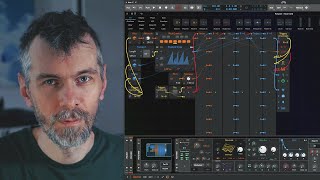
Jun 24, 2024 Tutorial
In this video, I demonstrate how to create a random note generator using the Polymer synthesizer in Bitwig Studio. I use the Node Grid and the Dice module to generate random nodes, and the Triggers module to create eight equally spaced triggers within one bar. I then use the Shift register to record and modify the generated sequence, allowing for variations and alterations in the playback.
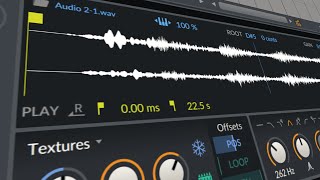
Mar 18, 2024 Tutorial
In this video, I start from scratch in Bitwig Studio to create a nice sounding loop using special techniques. I use the Poly-Grid to create background drones with sine oscillators and phase modulation for interesting overtones. I then sample these sounds and use them in a sampler, add effects, and create percussion elements to complete the loop.

Mar 15, 2024 Tutorial
In this video, I successfully replicated Harmony Bloom inside of Bitwig Studio with a few differences. Harmony Bloom is a Polyrhythm generator that allows you to generate notes and control various parameters such as note length, loop length, probability, offset, and more. Although my replication may not be 100% accurate, it provides a similar functionality within the grid of Bitwig Studio.
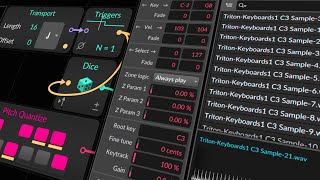
Mar 01, 2024 Tutorial
In this video, I demonstrate a workflow for creating complex patterns and ambient songs using the Trident synthesizer. By sampling different presets from the bell and mallet category, slicing them, and renaming the files, I can load them into a sampler to create a unique and dynamic sound. This method allows for easy experimentation and can be applied to various genres, from ambient to percussion.
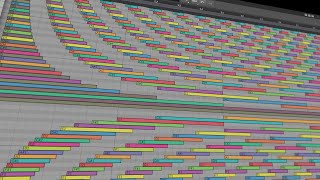
Jan 29, 2024 Tutorial
In this video, I share how I created visually pleasing patterns in Bitwig Studio's piano roll. By using note grids, modules, and pitch manipulation, I was able to create interesting polyrhythms and polymeters. I also experimented with randomizing frequencies and converting them into notes, allowing for unique sounds in the piano roll.
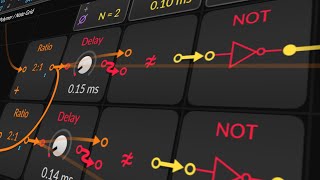
Jan 18, 2024 Tutorial
In this video, I showcase an interesting technique in Bitwig where I create a musical composition using only a node grid instead of traditional note creation methods. By manipulating pitch ratios, step mods, and triggers, I generate unique polyrhythmic patterns and head sounds. I demonstrate how to use the node grid to control multiple instruments, apply effects like reverb and convolution, and create complex chord progressions using subtract and quantize modules.
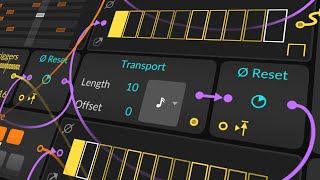
Jan 15, 2024 Tutorial
In this video, I demonstrate different methods of creating easy polymeters in Bitwig Studio. I show how to use a node grid with a monophonic mode, a gates module, and a transport module to generate nodes. I also discuss a different setup using a counter and a trigger module, as well as the use of a clock quantizer for better precision.
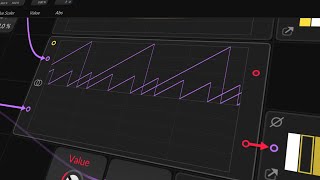
Jan 11, 2024 Tutorial
In this video, I explain the difference between Polyrhythms and Polymeters. Polyrhythms involve subdividing a one-bar grid into equally spaced steps using triggers, while in Polymeters, the subdivisions stay the same but the length of the bar changes. To achieve Polymeters, I demonstrate using a reset module to reset the face signal at a certain point in time.
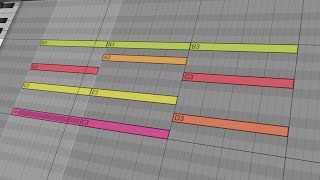
Dec 19, 2023 Tutorial
In yesterday's video, I created a dynamic global transpositioning tool for Bitwig. In today's video, I created a global chord track using a synthesizer and a note clip. By using the note grid and the global chord track, I was able to automatically correct the pitch of my piano solo and create a bass line that followed the chord progression.
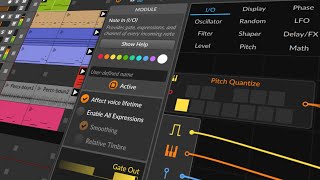
Dec 18, 2023 Tutorial
In this video, I demonstrate different methods to transpose tracks in . I start by manually transposing individual clips, then show how to use the note transpose function on each track. However, the most efficient method is using the node grid with a pitch quantizer to easily transpose tracks globally, allowing for experimentation with different keys.
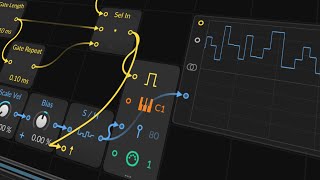
Dec 14, 2023 Tutorial
In this video, I built a step sequencer that can generate drum patterns with different note ranges and accents. I explained how to use a threshold to determine which steps trigger a drum hit, and demonstrated how to adjust the velocity, gate length, and accentuation of the patterns. The sequencer allows for creative possibilities with polyrhythms and can be used to generate unique drum patterns for music production.
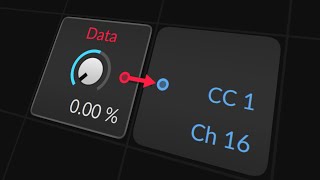
Dec 13, 2023 Tutorial
In this video, I share an idea I had to generate presets on the fly using a note grid and MIDI modulators in Bitwig Studio. By assigning different CC numbers to each voice in the note grid, I can generate random CC values and use them to modulate various parameters of synthesizers or effects. This approach allows for dynamic and unique sound variations within a song or live set.
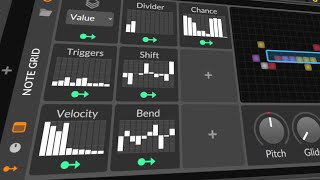
Dec 11, 2023 Tutorial
In this video, I show how to create a drum sequencer in Bitwig Studio using the note grid and various modules. By selecting a drum sampler or VST, creating note clips, and manipulating triggers, velocity, and timing, I demonstrate how to generate unique drum sequences. I also explore features like note stacking, shifting, quantizing, and randomization to create diverse and customizable drum patterns.
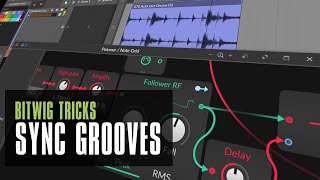
Nov 20, 2023 Tutorial
In this video, I show you a simple way to synchronize melodies or bass lines to a sloppy drum groove using Bitwig. By using a note grid and the audio signal from the drum channel, I demonstrate how to use an audio follower and delay to detect the transients in the drum loop and use them as a clock signal to synchronize the arpeggiator. This technique allows you to apply a custom groove to your melodies while maintaining the swing feel of the drums.
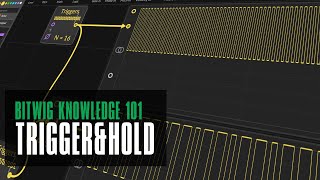
Nov 06, 2023 Tutorial
In this video, I explain the concepts of device phase, triggers module, sample and hold, and clock quantizer in Bitwig Studio's grid. I demonstrate how the triggers module produces a binary signal and divides the device phase into equally spaced steps. I also showcase how the sample and hold module holds a signal's value until triggered, and how the clock quantizer synchronizes signals to a grid size, creating interesting rhythmic patterns.
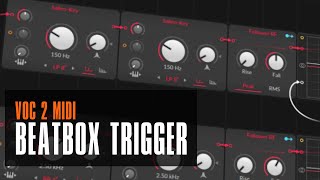
Jun 05, 2023 Tutorial
In this video, I show how to record your microphone and convert it into MIDI notes to trigger random samples in Bitwig Studio. To do this, I use a trigger to trigger the kick drum, snare, and hi-hat samples, and a hardware device to select the microphone input. I also use an auto-leveler with a follower, threshold, and sustainer to amplify the vocals and filter out noise. To separate the sounds, I use a sound key filter with a bandpass, low pass, and high pass, and use logic to exclude certain combinations of triggers. Finally, I use a quantizer in trigger mode to put all the triggers on the grid. Overall, this process requires a lot of tweaking and filtering to find the right sweet spot, but it can be done in Bitwig Studio with some experimentation.
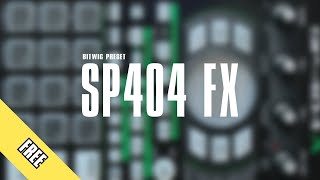
May 20, 2021 Tutorial
In this video, I show how to recreate the magic effect section of an Roland SP404 sampler hardware device in Bitwig Studio. I explain how to make a chain device to contain all of the effects, and then I go through each effect step-by-step. I demonstrate how to create a beat repeater, a bit crusher, an EQ, a delay, a filter, a pitch wobble, and a low fire effect. I also show how to use remote controls to trigger the effects and how to synchronize them to the beat grid. Finally, I provide a free preset to download in the description.
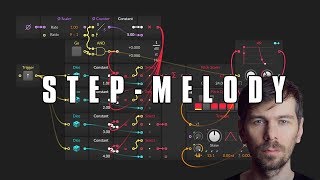
Jul 02, 2019 Tutorial
In this video, I show you how to create a step sequencer that generates a melody on a click and in scale. I start by setting up a polygrid and creating a clock using a scaler. Then, I use a counter to create the step sequencer and apply some math to get clean integer values for each step. I use a dice to generate random notes and a comparing module to trigger the steps. I also use a pitch scaler to narrow down the range of the notes and a pitch quantize module to further refine the melody. Finally, I demonstrate how to use logic operators like smaller and bigger to manipulate the signals. Overall, it's a basic setup, but you can customize and expand on it as you wish.
More Tags to choose from:
posts Bitwig FromScratch Tutorial German Talk Skyence bitwig-guides Audio-FX Poly-Grid articles Guidelines Knowledge PDF Brain Neurosience Webtool Tempo Mixing Harmony helpers Chords Scales community-report Community release Polarity Music Bandcamp music-videos Ambient Hardware Jam Drum-and-Bass Mixtape fawm Behringer Moog Retro polarity-music Bitwig-2.0 VST-Plugin Audio-Effects Bitwig-3.0 Presets Sampling Generative Melodies Note-Grid Bitwig-3.2 Modulators Bitwig-3.1 Plugins Preset Sound-Design Replace VST Note-FX Polysynth MPE Roli Melda Bitwig-4.4 MinimalAudio Distortion Midi Arturia Groove Drums Filters FX-Grid Bitwig-4.3.4 Physical-Modeling Eurorack Instrument Arrangement Automation Risers Transitions Audio2Midi OpenSource PlugData Reverb Clever-Audio-Plugin-Clap AI download FM-synths machine-learning oscillators soniccharge Sound-Generator SynPlant Synthesizers Compiler Heavy-Compiler Synth Current Granular-Synthesis Pads Vector XY-Instrument Touch-Designer Video-Edit Visuals Extension Beginners Bitwig-5.1 Glitch Sync Delay Signals xlnaudio additive Sequencer Euclidean Bitwig-5.1.2 No-Grid Stock Finishing-Songs Thoughts Browser Jazz M1 Convolution Polyrhythm Polymeter Clip-Launcher AudioThing Lese Techno Modulation Synthwave Routing Spectral tests paulxstretch Triton Grains Patreon Utility Analogue Oeksound Bitwig-5.1.6 Kilohearts Project Bitwig-1.3.16 Tegeler Wavetable tbproaudio Amiga Bitwig-5.1.7 Trance Bitwig-5.2b1 Theming Giveaway Bitwig-5.2b2 Segments Ableton Bitwig-5.2b5 key-tracking EQ zplane Bitwig-5.2b7 Calculations Markov Shift-Register Bitwig-5.2b8 Bitwig-5.2b10 Voice-Stacks Bitwig-5.2b11 Feedback Dynamics Bitwig-5.2b12 Bitwig-5.2b13 Bitwig-5.2 sonnox dadalife Bitwig-5.2.1 Bitwig-5.2.2 Bitwig-5.2.3 Problems Audio-Tracks reaction EDM Bitwig-5.2.4 Kickdrums fft Software Bitwig-5.2.5 process.audio Impulse-Responses Bitwig-5.3b1 Freq-Shifter Bitwig-5.3b2 Bitwig-5.3b3 Bitwig-5.3b4 StateOfBitwig Bitwig-5.3b5 Mastering ControllerScript Bitwig-5.3.2 openDAW Bitwig-5.3b10 Bitwig-5.3.1 Bitwig-5.3.8 Connect-4-12 GRMTools Waveguide reloop Bitwig-5.3.10 Application Bitwig-6b1 Bitwig-6b2 Bitwig-6b3 bitwig-grid-course bitwig-classic-sounddesign























